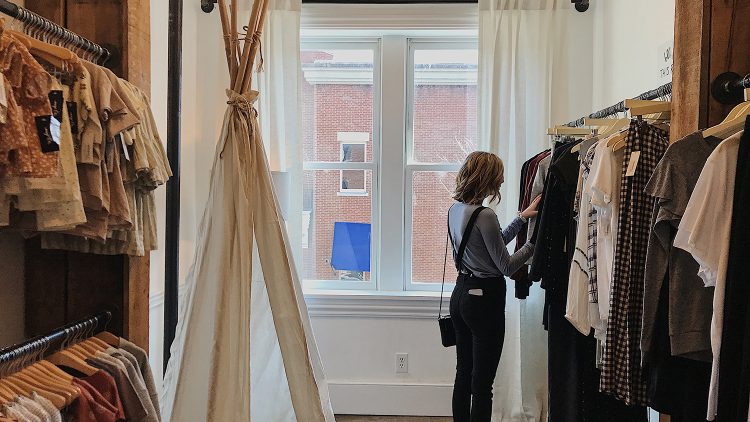The Evolution of Women’s Fashion: From Corsets to Empowerment
Women’s fashion has witnessed a remarkable evolution over the centuries, reflecting societal changes, cultural influences, and shifting perceptions of femininity. From restrictive corsets and voluminous skirts to the rise of modern and empowering styles, women’s fashion has been a reflection of social progress and individual expression. This article traces the journey of women’s fashion, exploring the transformation of clothing from garments that confined and defined women to fashion that empowers and liberates.
The Era of Corsets and Hoopskirts
Historically, women’s fashion was characterized by rigid and constrictive garments that emphasized the female form according to societal ideals of the time. During the 19th century, corsets were a staple in women’s wardrobes, tightly laced to create an hourglass silhouette. These corsets, while considered fashionable, were uncomfortable and even harmful to women’s health.
The Victorian era also saw the popularity of hoopskirts or crinolines, which created voluminous skirts with a wide circumference. While the crinoline allowed for easier movement than corsets, it still restricted women’s mobility and defined their roles within the confines of society.
The Advent of Reform Dress
The late 19th and early 20th centuries marked a significant shift in women’s fashion, driven by the reform dress movement. Influenced by the women’s rights movement, activists advocated for more practical and comfortable clothing that allowed women greater freedom and autonomy.
Reform dress, including the bloomer costume, focused on looser and less restrictive garments. Amelia Bloomer popularized the bloomer costume, which consisted of a knee-length skirt worn over loose trousers, challenging traditional gender norms.
The Flapper Era and the Roaring Twenties
The 1920s brought about a radical change in women’s fashion, known as the flapper era. The flapper style rejected the corseted and restrictive attire of the past, embracing a more youthful and androgynous look.
Shorter hemlines, dropped waistlines, and boxy silhouettes were hallmarks of the flapper dress, allowing women greater freedom of movement and a sense of liberation. The flapper fashion embodied the spirit of independence and rebellion against traditional gender roles.
World War II and Utility Fashion
During World War II, fashion responded to the demands of the wartime economy and practicality. Utility fashion emerged, emphasizing functional and versatile clothing. Rationing of materials led to simplified designs, with a focus on durability and practicality.
Women’s fashion adapted to accommodate their roles in the workforce during the war. Iconic looks like the working uniform of Rosie the Riveter became symbols of female empowerment and the important role women played during the wartime effort.
The Rise of Femininity and the New Look
In the post-war period, women’s fashion experienced a return to femininity and elegance. The iconic New Look, introduced by Christian Dior in 1947, embraced a romantic and opulent aesthetic. The New Look featured nipped-in waists, full skirts, and structured bodices, emphasizing an ultra-feminine silhouette.
While some criticized the New Look for its revival of restrictive elements, it marked a departure from the utilitarian fashion of the war years and symbolized a return to luxury and glamour.
The Swinging Sixties and Youth Revolution
The 1960s witnessed a cultural and fashion revolution, driven by the youth counterculture and the women’s liberation movement. The decade brought about bold and daring styles, from mini skirts to psychedelic patterns and color-blocked dresses.
Designers like Mary Quant challenged traditional norms and embraced youthful, fun, and free-spirited fashion. The fashion of the 1960s reflected the changing attitudes towards women’s roles and societal expectations.
Power Dressing: The 1980s and Beyond
The 1980s saw the emergence of power dressing, characterized by strong shoulders, tailored suits, and bold accessories. Power dressing was influenced by the growing presence of women in the workforce, reflecting their desire to assert authority and command respect in traditionally male-dominated fields.
The 1980s marked a significant step towards women’s empowerment through fashion, combining elements of femininity with a sense of authority and confidence.
Contemporary Fashion: Embracing Diversity and Individuality
Today, women’s fashion is a reflection of diversity and individuality. The fashion industry has evolved to embrace a broad spectrum of styles, sizes, and cultural influences. Designers are increasingly conscious of the importance of inclusivity and body positivity, offering a more diverse range of clothing options.
From gender-neutral fashion to sustainable and eco-conscious choices, contemporary fashion empowers women to express themselves authentically and confidently. Women can choose from an array of styles that align with their personalities, values, and lifestyle.
The evolution of women’s fashion reflects a dynamic interplay between societal norms, cultural shifts, and the quest for female empowerment. From corsets and hoopskirts that confined women to flapper dresses that symbolized rebellion, fashion has evolved to become a tool for liberation and expression.
Each era of women’s fashion has left its mark on history, representing not only changing styles but also the evolving status of women in society. Today, women’s fashion embraces diversity, individuality, and empowerment, allowing women to celebrate their uniqueness and stand tall in their personal style choices. As women’s roles in society continue to evolve, so too will fashion, shaping the future of women’s empowerment through clothing and self-expression.










